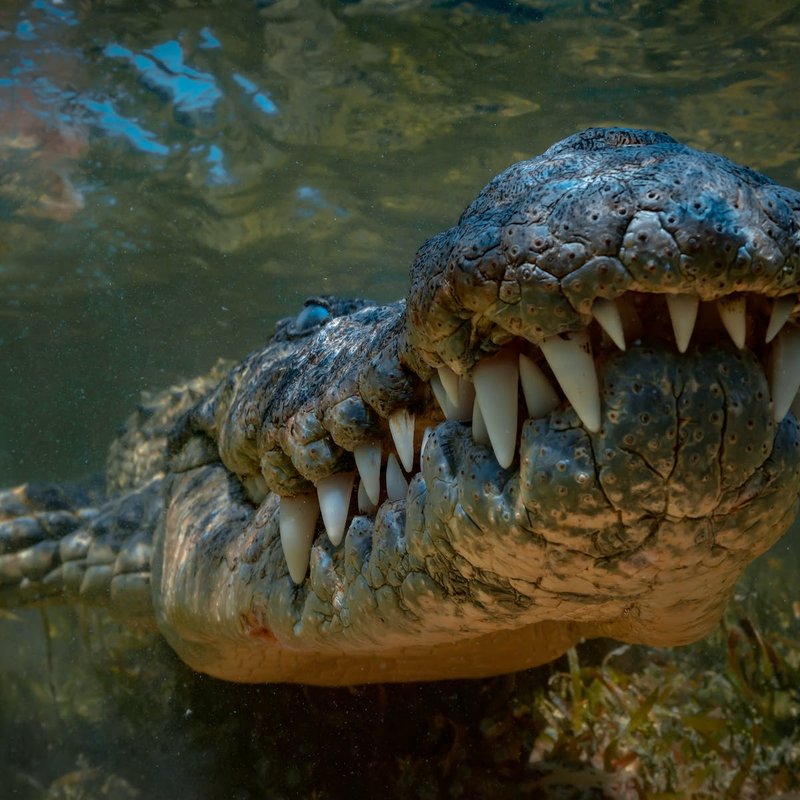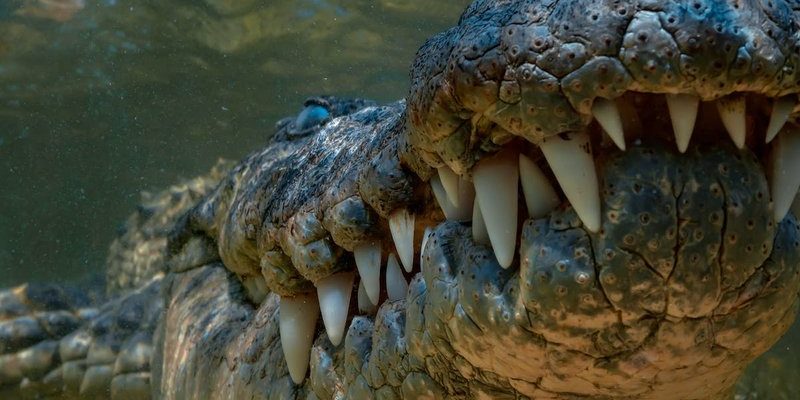
Saltwater crocodiles are a powerful reminder of how adaptable life can be. They not only endure harsh living conditions but also excel in them, thanks to their unique physical traits and behaviors. Let’s dive deeper into their incredible world and explore how these creatures make it all work against the odds.
The Saltwater Crocodile: An Overview
Saltwater crocodiles, scientifically known as *Crocodylus porosus*, are the largest reptiles on the planet. They can grow up to 23 feet long and weigh over a ton! These giants are known to inhabit a variety of environments, but they’re especially famous for their presence in coastal regions and brackish waters. Their remarkable size and adaptability set them apart from other crocodile species.
You might be surprised to find out that these crocs can live in both freshwater and saltwater. Their bodies have special adaptations that allow them to filter out excess salt from their bodies. Picture a built-in water purification system! This ability helps them thrive in salty coastal areas where food is plentiful, like fish and crustaceans.
It’s also important to note that saltwater crocodiles are excellent swimmers. They can move swiftly through water with their powerful tails, making them efficient hunters. This agility, combined with their stealthy nature, allows them to blend into their surroundings, waiting patiently for the perfect moment to strike.
Physical Adaptations for Harsh Environments
One of the key factors that contribute to the survival of saltwater crocodiles in harsh environments is their impressive physical adaptations. Their skin, for instance, is incredibly tough and armored, providing protection against predators and environmental hazards. This tough exterior is like nature’s body armor, giving them a fighting chance against both natural enemies and the harsh elements.
Moreover, their eyes and nostrils are positioned on the top of their heads, allowing them to see and breathe while mostly submerged in water. Imagine lying in wait for prey, barely breaking the surface! This design helps them remain hidden and undetected by both prey and potential threats.
Additionally, saltwater crocodiles have a unique circulatory system that allows them to tolerate low oxygen levels. They can slow their heart rate when submerged, conserving energy for longer periods. So when other animals might give up, these reptiles can hang in there, waiting for the right moment to act.
Behavioral Adaptations That Enhance Survival
Beyond their physical traits, saltwater crocodiles exhibit remarkable behavioral adaptations that enhance their chances of survival. For one, they can regulate their body temperature by basking in the sun or retreating to cooler water. This ability helps them thrive in the heat of tropical climates.
Socially, saltwater crocodiles are generally solitary creatures, but they do exhibit territorial behavior. Males, in particular, can be quite aggressive in defending their territory, especially during mating season. This assertive behavior ensures they have access to food and breeding opportunities.
You might also find it interesting that they use a method called “snapping” to attract mates. Males will create a series of loud, resonating sounds to communicate their presence and assert their dominance. It’s like a mating call, echoing through the waters, drawing in potential partners. This communication is vital for reproduction and the continuation of their species.
Feeding Strategies in Challenging Conditions
When it comes to feeding in harsh environments, saltwater crocodiles are opportunistic hunters and are not picky eaters. They primarily feed on fish, birds, and small mammals but can take down larger prey, including wild boar or even other crocodiles when necessary. Their strong jaws can crush bones, making them formidable predators.
One of their most fascinating feeding strategies involves the use of patience. Saltwater crocodiles can stay completely still for hours, waiting for the unsuspecting prey to come too close. This stealthy ambush tactic is incredibly effective and showcases their hunting expertise. When the moment is right, they propel themselves forward with surprising speed, snagging dinner with a swift bite.
Additionally, they can go for weeks without food if necessary, allowing them to survive during lean times. This energy-efficient lifestyle enables them to adapt to seasonal changes or challenges presented by their environment. Imagine being able to hit the pause button on your hunger—that’s a skill worth having in the wild!
Thermoregulation in Extreme Conditions
Saltwater crocodiles face extreme temperatures in their habitat, both hot and cold. So, how do they manage their body temperature? This is where thermoregulation comes into play. They utilize both behavioral and physiological strategies to stay comfortable in fluctuating climates.
During hot days, they can be seen basking in the sun to raise their body temperature. However, when they get too warm, they’ll head to the water or seek shade under tree canopies. This back-and-forth dance between sun and shade ensures they don’t overheat, which can be dangerous for reptiles that rely heavily on external heat sources.
During cooler months, on the other hand, they may become less active. It’s their way of conserving energy when food isn’t as plentiful. They’ll often be found resting in sunny patches or submerged in warmer waters, staying cozy while waiting for temperatures to rise. This ability to adapt to temperature changes is crucial for their survival.
Reproductive Strategies for Survival
When it comes to reproduction, saltwater crocodiles have developed some interesting strategies to ensure their offspring’s survival, particularly in harsh environments. Female crocodiles will typically lay between 20 to 60 eggs in a nest made from vegetation and mud. This nest is not just a simple pile of dirt; it’s carefully crafted to help maintain the right temperature for the eggs.
Once the eggs hatch, the female plays a protective role, guiding the hatchlings to water and keeping them safe from predators. She becomes a fierce defender, showing just how devoted a mother can be in the wild. This nurturing behavior increases the chances of the young crocodiles surviving in a world filled with dangers.
Interestingly, the sex of the hatchlings is determined by the temperature of the nest. Warmer temperatures can produce males, while cooler ones may yield females. This natural balance allows crocodiles to adjust their population dynamics based on environmental conditions, showcasing yet another adaptation to survive amidst challenges.
The Role of Habitat Preservation in Survival
Maintaining the balance in their ecosystems is vital for the survival of saltwater crocodiles. Sadly, human activities such as habitat destruction, pollution, and climate change pose significant threats to these magnificent creatures. Wetlands and coastal areas, which are crucial for their survival, are disappearing. This loss affects not only crocodiles but also many other species that share their habitat.
Local conservation efforts play a pivotal role in preserving these environments and ensuring that saltwater crocodiles continue to thrive. Protected areas, sustainable practices, and educational programs help raise awareness about the importance of preserving these ecosystems.
If you ever get the chance to visit a place where saltwater crocodiles live, it’s essential to respect their environment. Every little action counts, and protecting these habitats helps secure the future for these incredible reptiles and the delicate balance of nature.
In summary, saltwater crocodiles are truly remarkable creatures that have adapted to survive in some of the toughest environments on the planet. With their unique physical traits, clever behaviors, and efficient feeding strategies, they continue to thrive despite the challenges. By understanding their world, we can appreciate the incredible resilience of life in all its forms.

